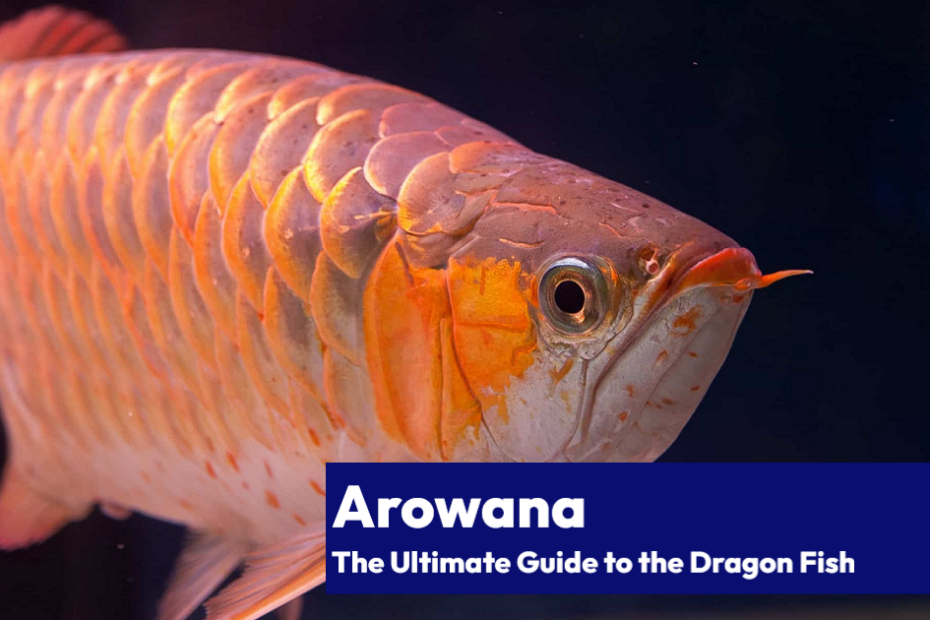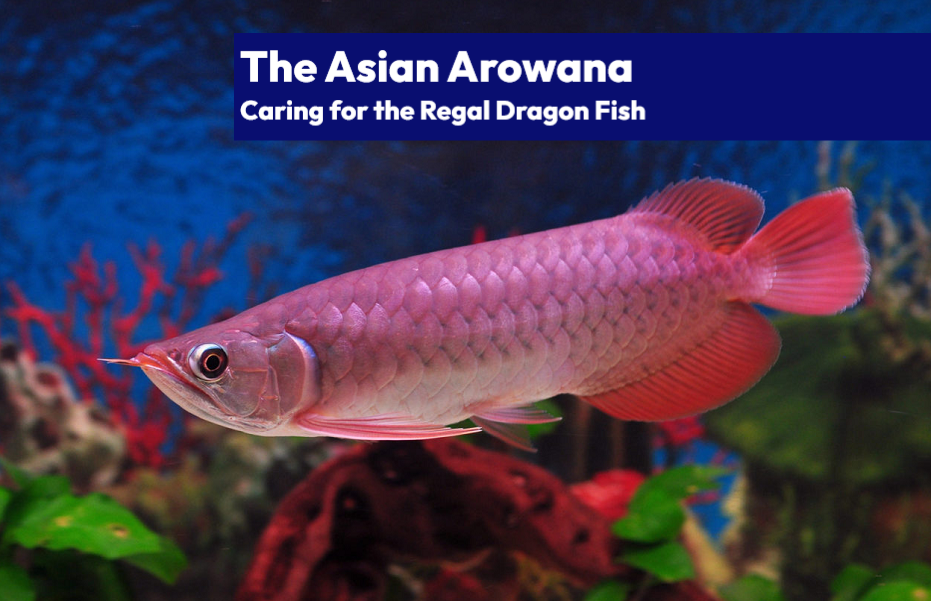Ahoy there, aquarium enthusiasts! Today, we’re embarking on a journey into the fascinating world of Arowana fish. These captivating creatures have been swimming their way into the hearts (and wallets) of fish enthusiasts for decades, thanks to their breathtaking beauty, cultural significance, and the irresistible allure of their legendary status. So, strap on your scuba gear, and let’s dive into the watery depths of Arowana knowledge!
Arowana 101: The Who, What, and Why of these Scaly Stars
A Brief Overview of Arowana Fish
Arowana are large, freshwater fish native to Southeast Asia, South America, and Australia. They’re known for their elongated bodies, their jaw-dropping, colorful scales, and their undeniable je ne sais quoi that makes them one of the most sought-after fish in the aquarium world.
Importance in the Aquarium Trade
The Arowana has long been a showstopper in the aquatic world, with their captivating beauty and sheer size making them a must-have for any serious hobbyist. But it’s not just their looks that make them so desirable – these fish have a certain x-factor that has made them a symbol of wealth and prosperity in many cultures, particularly in Asia.
Popularity and Symbolism in Asian Culture
In many Asian cultures, the Arowana is seen as a harbinger of good fortune and prosperity. Their sinuous, dragon-like appearance has earned them the nickname “Dragon Fish,” and they’re often kept in the homes and businesses of those seeking a little extra luck. So, next time you’re in need of a good-luck charm, why not consider an Arowana instead of a rabbit’s foot?
The Price of Prestige: Arowana Cost in the USA
Arowana fish are often considered a luxury item in the aquarium trade, and their prices can vary significantly depending on the species, rarity, color, and size. To give you a better understanding of the investment involved in acquiring an Arowana, we’ve compiled a table detailing the average cost of different types of Arowanas in the USA.
| Arowana Species | Average Cost in the USA (USD) |
|---|---|
| Green Arowana | $300 – $600 |
| Red Arowana | $1,500 – $5,000 |
| Golden Arowana | $1,800 – $8,000 |
| Silver Arowana | $50 – $150 |
| Platinum Arowana | $20,000 – $80,000 |
| Black Arowana | $100 – $300 |
| Jardini Arowana | $200 – $500 |
The Asian Arowana: AKA the Fabulous Feng Shui Fish
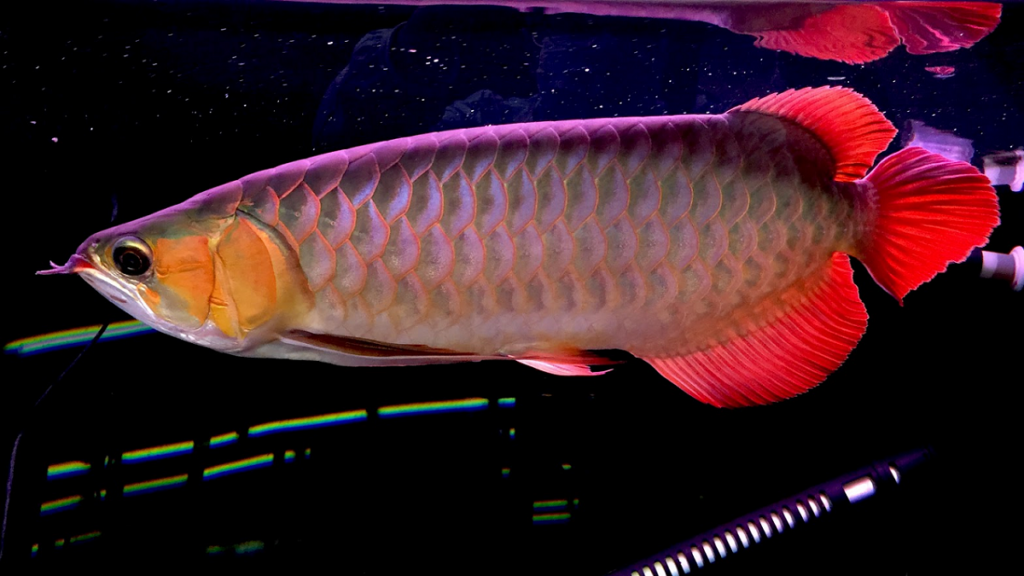
Origin and Habitat
The Asian Arowana hails from the slow-moving rivers and blackwater swamps of Southeast Asia, where they live amongst the tangled roots of dense vegetation. Their native habitat is under constant threat from deforestation and pollution, making conservation efforts all the more important.
Physical Appearance and Color Variations
The Asian Arowana is truly a sight to behold, with their shimmering scales coming in a dazzling array of colors – from the fiery red of a ripe tomato to the subtle green of a mossy forest floor. Their color variations are part of what makes them so sought-after, and you can bet your bottom dollar that every Arowana enthusiast has their favorite hue!
Importance in Feng Shui
Feng Shui is an ancient Chinese philosophical system and practice that seeks to harmonize and balance the flow of energy (called “Qi” or “Chi”) within a space, aiming to improve the inhabitants’ well-being and fortune. The term Feng Shui translates to “wind” (Feng) and “water” (Shui), representing the belief that the flow of these natural elements impacts our lives and environments.
In the world of Feng Shui, the Asian Arowana holds a special place as a symbol of prosperity and wealth. They’re believed to help attract abundance and ward off negative energies, making them a popular choice for those seeking to enhance the positive vibes in their home or workplace.
Conservation Status and Legal Trade
The Asian Arowana is currently listed as endangered on the IUCN Red List, primarily due to habitat loss and overharvesting for the aquarium trade. The good news is that efforts are being made to protect these beautiful fish, with strict regulations in place to ensure that only sustainably-sourced Arowana make their way into the hands of responsible hobbyists.
A Parade of Asian Arowana Subspecies: Greens, Reds, and Golds, Oh My!
Green Arowana
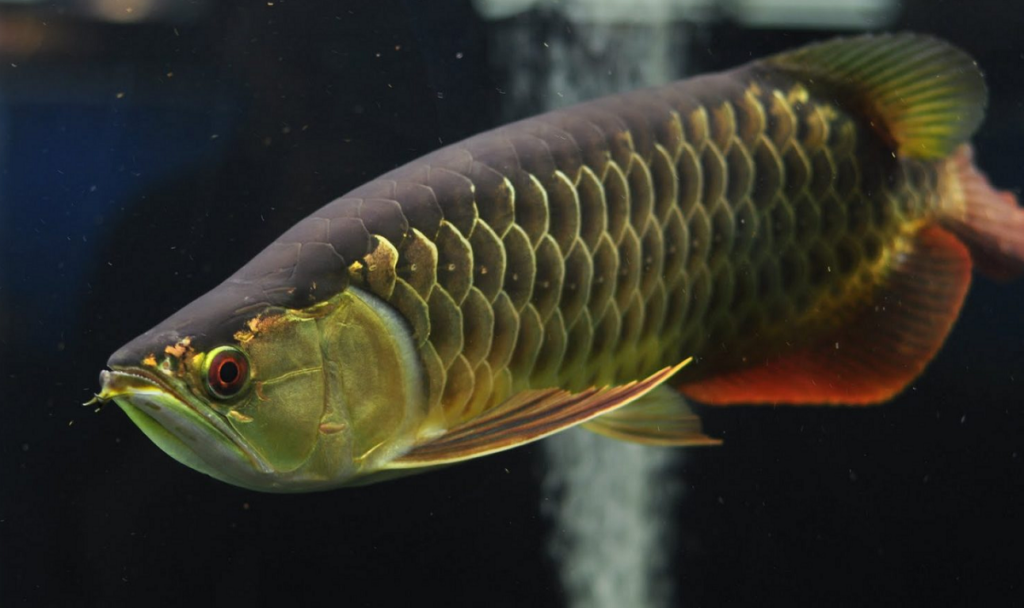
The Green Arowana is a true emerald beauty, with its iridescent green scales reflecting the lush, tropical foliage of its native habitat. They’re a favorite among
Arowana enthusiasts for their striking appearance and their slightly more affordable price tag compared to their red and gold counterparts. Just remember, you don’t have to be green with envy – you too could have one of these scaly gems in your very own tank!
Red Arowana
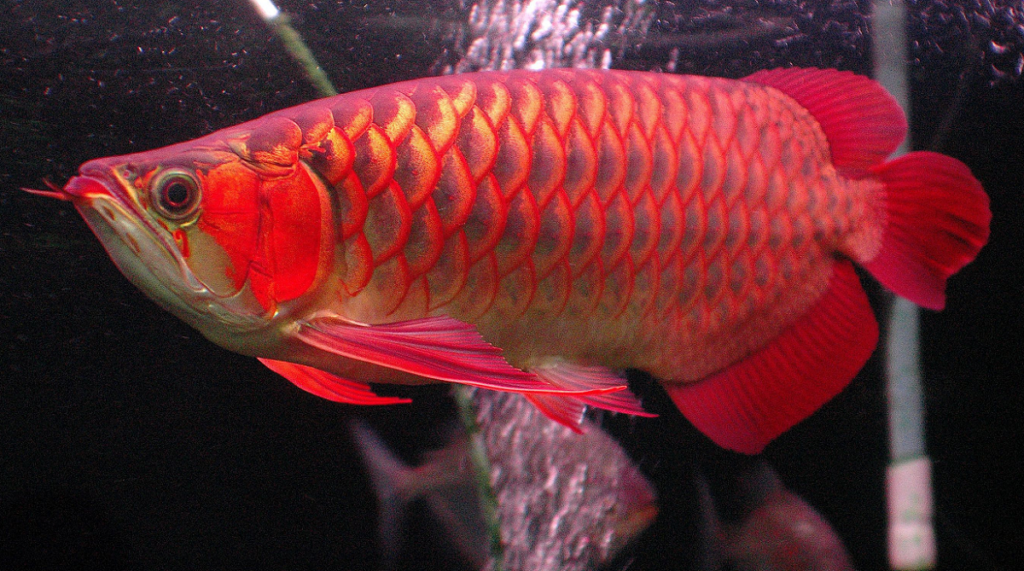
The Red Arowana, also known as the “Super Red” or “Blood Red” Arowana, is the fiery diva of the Arowana world. With scales ranging from a deep, rich red to a vibrant, eye-catching scarlet, these fish are the ultimate statement piece for any aquarium. But be warned, their beauty comes with a price – and we’re not just talking about the literal cost of these fish. The Red Arowana is known for being a bit feisty and may require some extra care and attention to keep them happy and healthy.
Golden Arowana
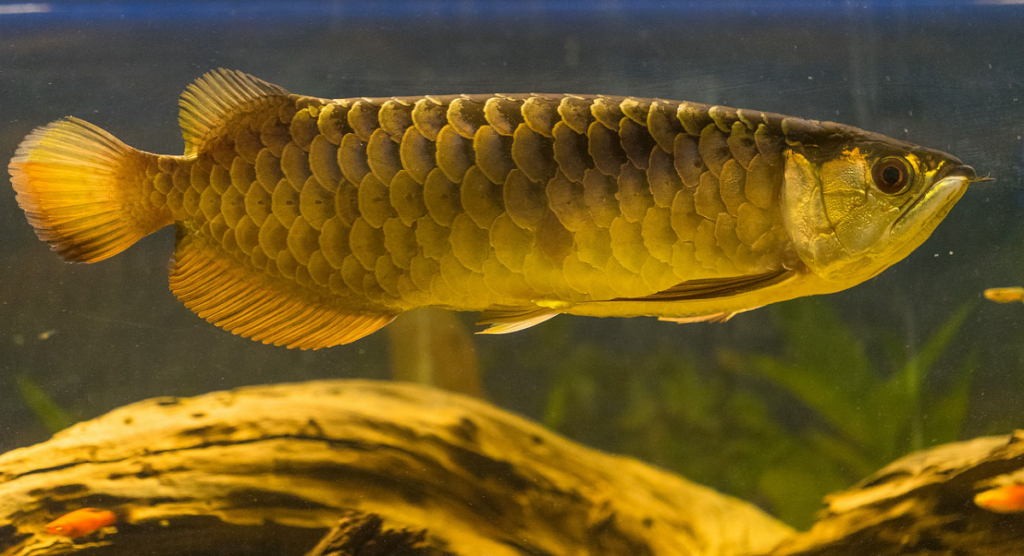
If you thought the Red Arowana was the pinnacle of Arowana opulence, think again. The Golden Arowana is the shining star of the Arowana world, with their glittering, gold scales making them the ultimate symbol of wealth and prosperity. These fish are so exclusive that they’re often accompanied by a hefty price tag and even their own certification of authenticity. So, if you’re looking to invest in a Golden Arowana, you better start saving your pennies now!
The Silver Arowana: The Aquatic Acrobat of South America
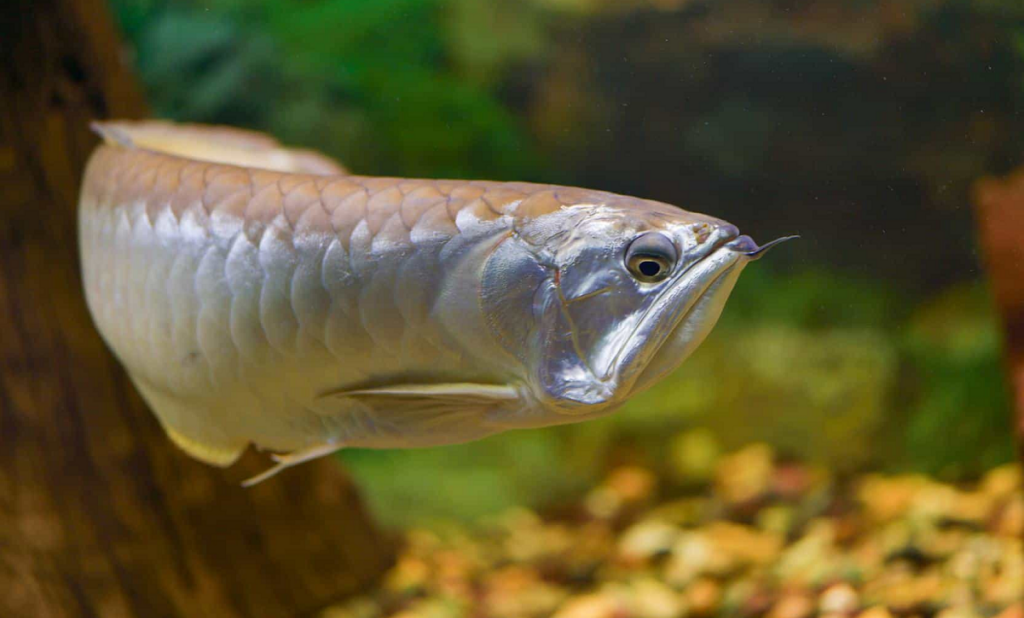
Distribution and Natural Habitat
The Silver Arowana calls the Amazon Basin home, where they can be found frolicking in the murky waters of South America’s largest river system. These agile fish are known for their ability to leap out of the water to catch insects and small animals – an impressive feat that has earned them the nickname “water monkeys.”
Distinctive Features and Size
The Silver Arowana is a real showstopper, with its elongated body, metallic silver scales, and mesmerizing, large eyes. They can grow up to a whopping 4 feet long, making them one of the largest Arowana species out there. Just make sure your tank is big enough to accommodate these aquatic giants!
Common Health Concerns and Care Tips
Silver Arowanas, like their Asian cousins, require a little extra TLC to keep them in tip-top shape. Some common health concerns include droopy eye (a condition where their eyes appear to be looking downward) and fin rot. To keep your Silver Arowana happy and healthy, make sure you’re providing them with a varied diet, pristine water conditions, and plenty of space to swim and leap to their heart’s content.
The Platinum Arowana: The Epitome of Aquarium Extravagance
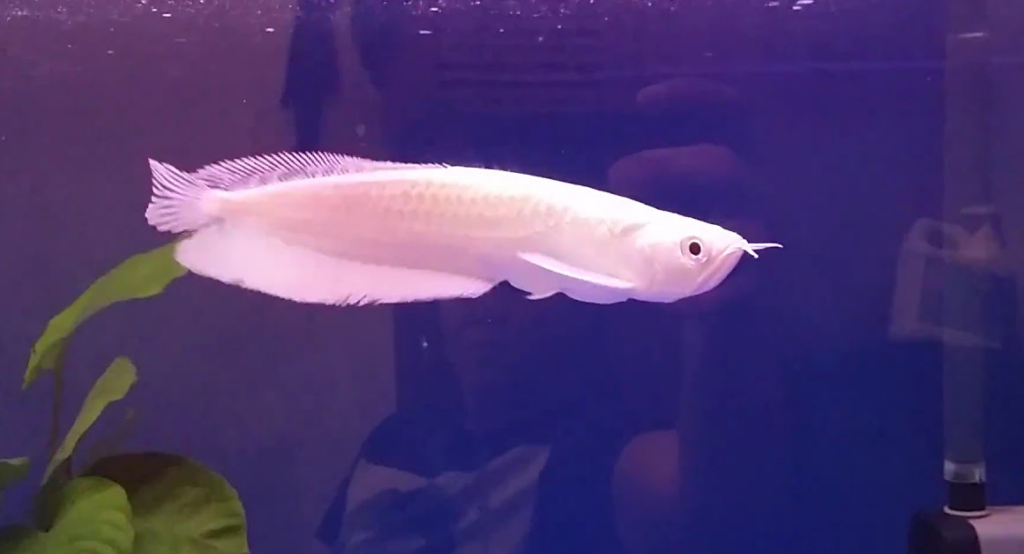
Discovery and Origin
The Platinum Arowana is a relatively recent addition to the Arowana family, having been first discovered in the early 2000s. These silvery-white fish are the result of a genetic mutation, making them incredibly rare and highly sought-after by collectors and hobbyists alike.
Unique Characteristics and Price
The Platinum Arowana is a true work of art, with its ghostly white scales and otherworldly appearance setting it apart from its more colorful cousins. But this beauty comes at a cost – these fish can fetch prices upwards of $400,000! So, if you’re considering adding a Platinum Arowana to your collection, you might want to start saving up now (or maybe just stick to admiring them from afar).
Rarity and Exclusivity in the Aquarium Trade
Due to their genetic rarity and the strict regulations surrounding the trade of Arowana, the Platinum Arowana is one of the most exclusive fish in the aquarium world. If you’re lucky enough to get your
hands on one of these elusive beauties, you’ll be the envy of fish enthusiasts everywhere. Just be prepared for the inevitable onslaught of aquarium aficionados begging for a glimpse of your prized possession.
Genetic Mutation and Breeding Possibilities
The Platinum Arowana’s unique appearance is the result of a genetic mutation known as leucism, which causes a partial loss of pigmentation in their scales. While breeding Platinum Arowanas is possible, the chances of producing offspring with the same mutation are incredibly low. In other words, these fish are like the lottery winners of the Arowana world – a rare and precious find indeed.
The Dark and Mysterious Black Arowana
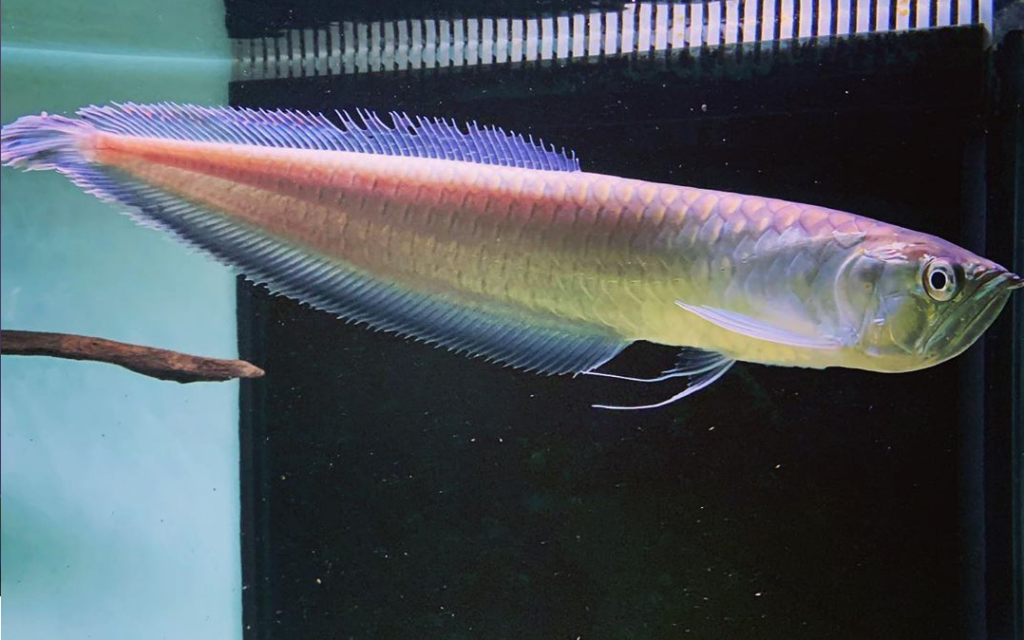
Native Habitat and Distribution
Hailing from the Amazon Basin in South America, the Black Arowana is a lesser-known member of the Arowana family. These fish prefer slow-moving or stagnant waters, where they can stealthily stalk their prey and blend in with their surroundings.
Physical Appearance and Size
The Black Arowana is a striking fish, with its dark, iridescent scales and elongated body giving it an air of mystery and intrigue. They can grow up to 3 feet long, making them a substantial addition to any aquarium.
Compatibility with Other Fish Species
Black Arowanas can be a bit territorial, so it’s essential to choose their tank mates wisely. Ideally, you should select fish that can hold their own against these assertive swimmers but avoid overly aggressive species that may stress out your Black Arowana.
Tips for Breeding Black Arowana
Breeding Black Arowanas can be a bit challenging, but with a little patience and dedication, it’s not impossible. Make sure to provide a suitable breeding environment with plenty of hiding spots and pristine water conditions. And remember, practice makes perfect – it may take a few attempts before you successfully breed these enigmatic fish.
The Jardini Arowana: Australia’s Aquatic Jewel
Geographic Distribution and Habitat
The Jardini Arowana hails from the Land Down Under, where it can be found in the rivers and billabongs of northern Australia. These fish prefer warm, slow-moving waters, making them well-suited to life in a tropical aquarium.
Physical Appearance and Unique Traits
The Jardini Arowana is a striking fish, with its golden-brown scales, intricate markings, and elongated body. These fish are known for their strong, powerful jaws, which they use to chomp down on their prey with gusto. So if you’re looking for a fish that packs a punch, the Jardini Arowana might be the perfect fit for you.
Care Requirements and Tank Setup
Jardini Arowanas can be a bit feisty and require plenty of space to swim and stretch their fins. Make sure your tank is large enough to accommodate their size and provide them with ample hiding spots and room to roam. A well-maintained water environment is also crucial to keeping your Jardini Arowana healthy and happy.
Arowana Tank Mates: Friends or Foes?
Suitable Tank Mates for Arowana
While Arowanas may be the stars of the show, they can’t hog the spotlight all the time. Some suitable tank mates for your Arowana include larger, semi-aggressive fish like Oscars, Giant Gouramis, and larger species of catfish. Just be sure to monitor their interactions and be prepared to intervene if things get a bit too rowdy.
| Tankmate | Compatibility Score (out of 10) |
|---|---|
| 1. Bichirs | 9 |
| 2. Large Catfish | 8 |
| 3. Clown Loaches | 8 |
| 4. Oscar Fish | 7 |
| 5. Giant Gourami | 7 |
| 6. Silver Dollars | 7 |
| 7. Parrot Cichlids | 6 |
| 8. Plecostomus | 6 |
| 9. Blood Parrot | 5 |
| 10. Tinfoil Barb | 5 |
Species to Avoid
Arowanas may be pretty, but they can also be pretty picky when it comes to their tank mates. Some species to avoid include smaller, slower-moving fish (which may become an Arowana snack), and overly aggressive or territorial species that could stress out your Arowana. It’s all about finding the right balance between coexistence and competition.
Arowana Care 101: Your Guide to a Thriving Arowana Empire
| Care Aspect | Arowana |
|---|---|
| Minimum Tank Size (gallons) | 250 |
| Ideal Water Temperature (°F) | 75-86 |
| Ideal pH Range | 6.0-7.0 |
| Filtration System | Canister/sump |
| Aeration | High |
| Substrate | Soft sand/fine gravel |
| Decorations | Rocks, driftwood, plants |
| Diet | Carnivorous |
| Feeding Frequency | Once or twice a day |
| Tank Mates | Compatible species |
| Water Changes | Weekly |
Home Sweet Tank: Crafting the Ideal Arowana Sanctuary
Arowanas are like the Olympic athletes of the fish world – they need space to flex those fins and flaunt their skills. So, a tank of at least 6 feet in length and 2 feet in width is a must. And don’t forget a solid, secure lid, because Arowanas can jump like they’ve got springs in their tails!
Arowana Diet: The Carnivorous Cravings
Arowanas have a hunger for meaty delights, so spoil them with a smorgasbord of live and frozen foods like insects, small fish, and shrimp. Want to impress your Arowana? Toss in a cricket or mealworm now and then for a gastronomic surprise!
| Food Type | Benefits for Arowanas |
|---|---|
| Live Crickets | High protein content, promotes growth and muscle development |
| Mealworms | Rich in protein and fat, supports healthy weight gain |
| Earthworms | Nutrient-dense, aids digestion and overall health |
| Small Fish (e.g. guppies) | Provides essential nutrients and natural hunting stimulation |
| Shrimp (freshwater or saltwater) | High in protein and minerals, supports immune system |
| Bloodworms | High protein content, promotes growth and overall health |
| Beef Heart | Rich in nutrients, supports muscle development and stamina |
| Market Prawns | Good source of protein, supports growth and vitality |
| Pellet Food | Balanced nutrition, convenient and easy to feed |
| Frozen Foods (e.g. krill) | Nutrient-dense, promotes overall health and well-being |
Crystal Clear Waters: The Key to Arowana Bliss
Arowanas can be a tad finicky about their water conditions, so it’s essential to keep everything pristine. Regular water changes and maintaining temperatures between 75-86°F (24-30°C) will have your Arowana thriving like an underwater royalty.
Health Watch: Keeping Illnesses at Bay
Arowanas, like all living beings, can fall victim to diseases and health issues. Keep a close watch on your scaly friend for any signs of trouble and be ready to tackle any problems head-on. Proper water maintenance and a well-rounded diet go a long way in keeping diseases at bay.
The Arowana’s Nemesis: Common Diseases
Arowanas can face a variety of diseases, including bacterial infections, parasites, and fungal issues. Familiar foes include dropsy, fin rot, and ich.
The Red Flags: Symptoms to Watch For
Keep an eye on your Arowana for any signs of illness, such as lethargy, loss of appetite, abnormal swimming, or visible lesions and spots on their body.
Timely Treatment and Prevention: Your Arowana’s Health Insurance
Early detection and swift action are crucial in treating Arowana diseases. Research the specific issue plaguing your fish and start treatment ASAP. Prevention is the best medicine – maintain water quality, provide a balanced diet, and minimize stress for a healthy, happy Arowana.
Creating the Ultimate Arowana Abode: Tank Setup Essentials
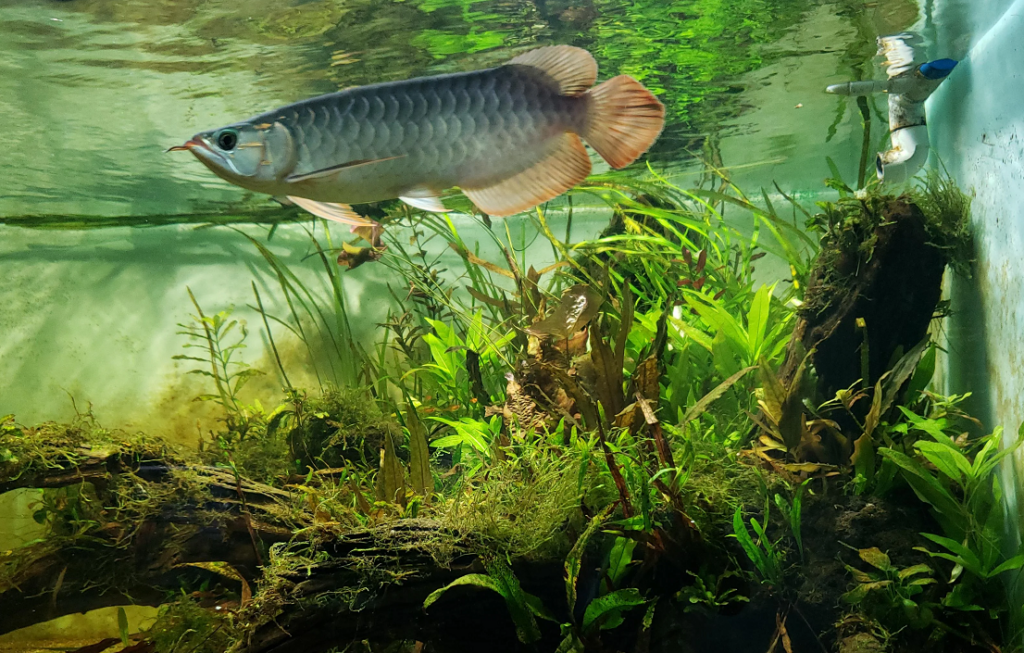
Size Matters: A Mansion for Your Arowana
We’ve established that Arowanas need ample space, so a 250-gallon tank is the way to go. Remember, bigger is always better when it comes to creating a luxurious Arowana pad.
Filtration and Aeration: The Unsung Heroes
Equip your Arowana tank with a powerful filtration system, like a high-quality canister filter or sump filtration system, to maintain crystal clear waters. Don’t skimp on aeration either – air stones or surface agitation devices will keep oxygen levels optimal.
Home Decor: Substrate and Decorations
When decorating your Arowana’s palace, opt for soft sand or fine gravel to keep those sensitive barbels safe. Include hiding spots with large rocks, driftwood, and sturdy plants, but always leave enough open swimming space for your Arowana to flex its fins.
Wrapping Up: A Salute to Arowana Diversity
We’ve delved into the captivating world of Arowanas, covering their unique traits, cultural significance, and practical care tips. Arowanas showcase the beauty and diversity of aquatic life, and their presence in the aquarium hobby sparks wonder and inspiration.
As aquarists, it’s vital to promote responsible and sustainable trade practices for Arowanas and all fish species. Support conservation efforts and make informed choices when purchasing fish to help protect our planet’s aquatic biodiversity for future generations.
TL;DR:
- Arowanas are large, carnivorous fish with significant cultural importance in Asian societies.
- Different species of Arowanas display unique colors, patterns, and physical traits.
- Proper care and tank setup are essential for the health and well-being of these majestic fish.
- Choosing suitable tank mates and providing a varied diet are crucial for a harmonious Arowana aquarium.
- Maintaining water quality and addressing potential health issues promptly can prevent disease outbreaks.
Taxonomy
| Arowana Species | Family | Genus | Species |
|---|---|---|---|
| Silver Arowana | Osteoglossidae | Osteoglossum | O. bicirrhosum |
| Black Arowana | Osteoglossidae | Osteoglossum | O. ferreirai |
| Asian Arowana | Osteoglossidae | Scleropages | S. formosus |
| Green Arowana | Osteoglossidae | Scleropages | S. formosus (variation) |
| Red-Tail Golden Arowana | Osteoglossidae | Scleropages | S. formosus (variation) |
| Banjar Red Arowana | Osteoglossidae | Scleropages | S. formosus (variation) |
| Jardini Arowana | Osteoglossidae | Scleropages | S. jardinii |
| Leichardti Arowana | Osteoglossidae | Scleropages | S. leichardti |
| African Arowana | Heterotidinae | Heterotis | H. niloticus |
| Arapaima | Arapaimidae | Arapaima | A. gigas |
All Arowana species belong to the Osteoglossidae family, except for the African Arowana, which belongs to the Heterotidinae family, and the Arapaima, which belongs to the Arapaimidae family. Despite these differences, these large, carnivorous fish share many similarities, including their elongated bodies, upward-facing mouths, and distinctive swimming patterns. The variations within the Scleropages genus, particularly the Asian Arowana species, showcase the rich diversity and adaptation these fish have developed in their different habitats.

Tim Priest, a renowned aquarium expert with over 15 years of experience in aquatic gardening and fish education, is dedicated to helping enthusiasts create stunning and thriving aquatic environments. As the founder of LearnTheAquarium.com, Tim shares his wealth of knowledge, passion, and expertise through engaging articles, educational resources, and personalized advice.
Discover the secrets to creating captivating underwater landscapes and maintaining healthy aquatic ecosystems. Join Tim on an exciting journey and let your aquarium adventure begin!
